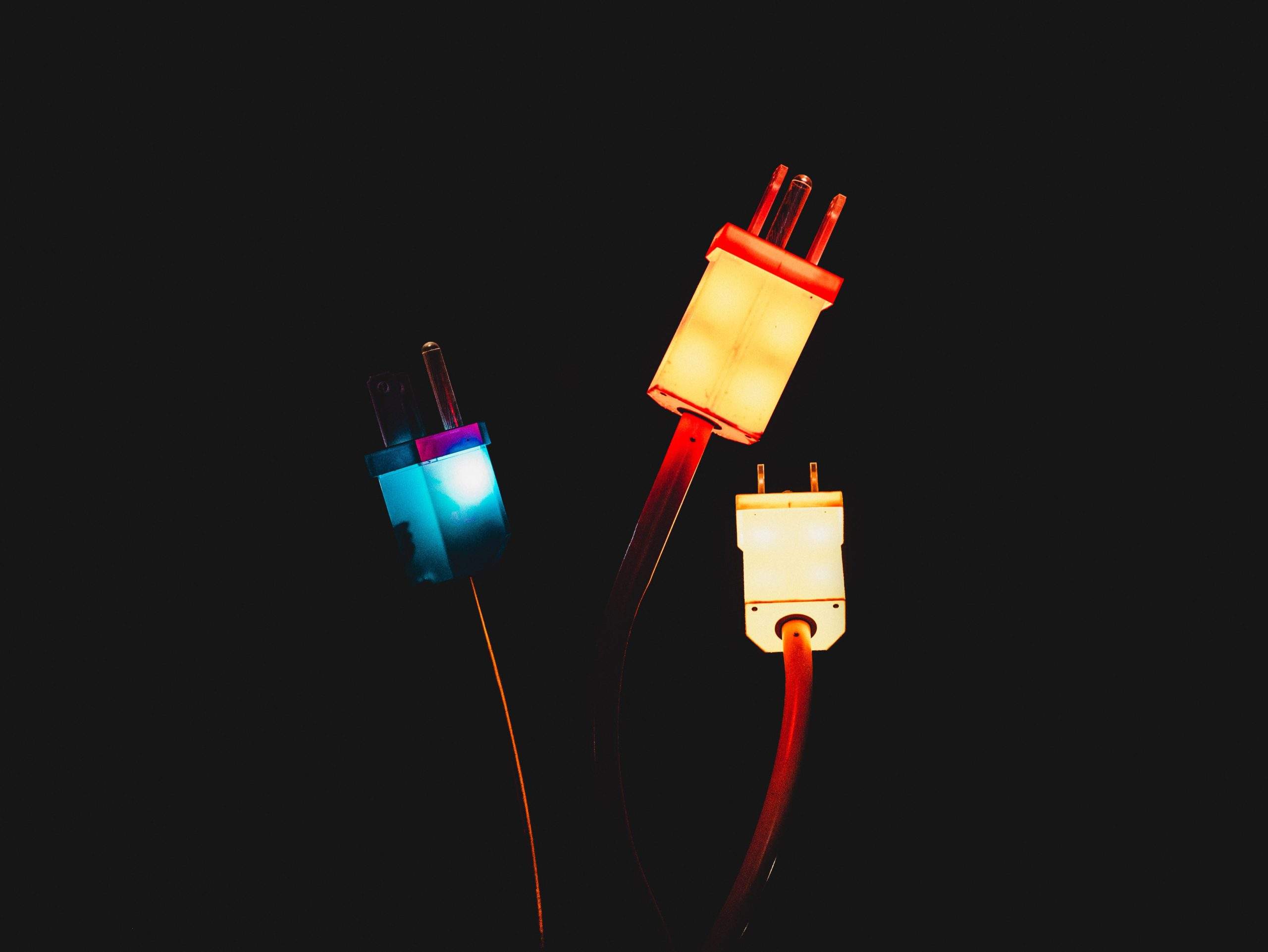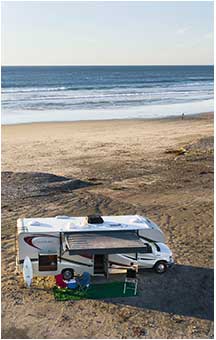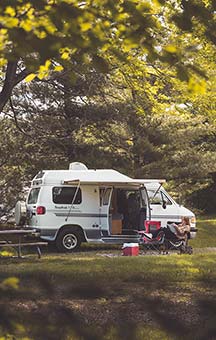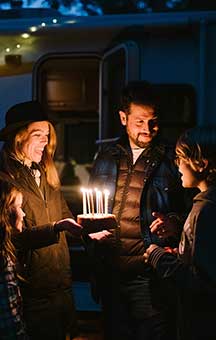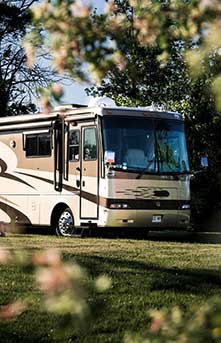Whether you’re at a cushy campsite with all the amenities, boondocking hundreds of miles from civilization, or anywhere in between, your RV’s electrical system will likely play a role in your camping experience. Electricity, whether coming from a campsite hook-up or batteries onboard your RV, will power all that’s inside your rig— lights, entertainment, appliances, and more. The inverter is a component of this system that allows you to use everything in your RV, no matter what power you have access to.

In this article, we’ll cover the basics of inverters, including what they are, how to use them, and where you can find a good one to purchase for your RV.
What is an RV inverter?
To understand what an inverter is, there are a few RV electricity basics you should know about. Your RV is likely equipped to handle two types of power:
- AC power: Alternating current systems in RVs resemble the system you’d find in your home. This is the 120-volt power that travels via power lines and comes in through your outlets. This powers anything you plug in, such as appliances.
- DC power: Direct current power, on the other hand, is what is stored in batteries and runs at a much lower 12-volts. On an RV, your water pump, lights, and fans typically run on DC power. Appliances typically do not run on DC power.
You’ll get AC power to your RV only if you’re connected to shore power or a generator. This means that when you’re at a campsite off-grid without a generator, your electrical capabilities are a little different than if you’re at a campsite with hookups.
An inverter, however, allows you to utilize your appliances, even when you’re not hooked up to shore or generator power. It does this by taking 12-volt DC power from your RV deep-cycle batteries and inverting it to 120-volt AC power. This makes it a crucial part of your electrical setup, especially if you plan on dry camping or utilizing solar power.
NOTE: You may have also heard about an RV converter. A converter is a separate device that may be on your RV and turns AC power into DC power for your fans, lights, and pumps. Never run your inverter and converter on at the same time. Doing so will simply drain your batteries.
Types of RV power inverters
There are two main types of inverters on the market today:
- pure sine wave
- modified sine wave inverters.
When inverters first came out, they were modified sine wave inverters. We won’t get into all the physics behind it, but modified sine wave inverters transform the DC power to AC power by creating a blocky electric signal. As technology has advanced, pure sine wave inverters have been able to transform the power into a smooth, almost-perfect sine wave that more closely resembles what comes through our utilities.
Modified sine wave inverters are less expensive, but they are also less compatible with today’s technology and appliances. Pure sine wave inverters produce electricity that is cleaner, smoother, quieter, and more efficient than modified inverters.
If you plan on powering any of the following, you’ll want to spend the extra money on a pure sine wave inverter.
- Newer TVs
- Appliances with AC motors like refrigerators and microwaves
- Appliances with digital clocks or electronic timers
- CFL light bulbs
- Sensitive medical equipment
Still, you can get by with running a modified inverter if you are only planning on running the simplest of electric systems, like an old CRT TV or water pumps. Anything more, and you might start running into issues.
Choosing the right RV inverter

When choosing the right RV inverter, you’ll want to consider a few things.
Type of inverter
We’ve already covered this, but first, you’ll want to decide whether you’re going to need a pure sine wave inverter or a modified sine wave inverter.
Power rating
Once you decide on the type of inverter, you should next consider the power capacity. What you’ll need depends on what you’ll be using in your RV.
Inverters are rated in watts. Electrical appliances and devices have a corresponding rating. You can determine watts by multiplying the number of amps that an appliance requires by 120. An Inverter Calculator such as the one found here can also help you determine how many watts your inverter will need to handle. Don’t forget to account for appliances or things you may power all at once!
May RVs get by just fine on inverters rated between 2000 and 4000 watts. However, keep in mind that power-hungry appliances— such as the air conditioner— may struggle to be powered by batteries.
Input and Output Voltage
Your input voltage should match your RV’s battery— which should be 12V. The output voltage should be 120V for most locations in North America. You’ll want to double-check this, especially if buying online as other countries operate on different voltages.
Best RV inverters
Not sure where to start your RV inverter search? Here are some of the best power inverters for RVs based on user reviews:
- AIMS Power 2000 Watt Pure Sine Inverter
- AIMS 5000 Watt Modified Sine Wave Inverter
- Power TechON 3000 Watt Pure Sine Wave Inverter
- Go Power! 3000-Watt Pure Sine Wave Inverter
How to use an RV inverter
Using an inverter is easy! Once you have everything installed (which is also pretty simple and can be guided by manufacturer’s instructions or a DIY video on YouTube) most inverters work by simply flipping a switch on when you’re ready to use your batteries.
As with anything in an RV, it’s super important to read any manuals or instructions that come with your RV or any equipment you purchase. While everything generally operates the same, there are small differences that you should be aware of.
Powering the fun
Your RV or motorhome inverter keeps the power and fun flowing, even when you’re not connected to shore power. By inverting the power from your batteries to AC, you can power almost anything in your RV using your batteries and/or solar panels. You’ll want to be sure to pick the right one, however, as not all inverters are created equal. Use this article to guide your search so you can help your renters get on the road and stay on the road!
